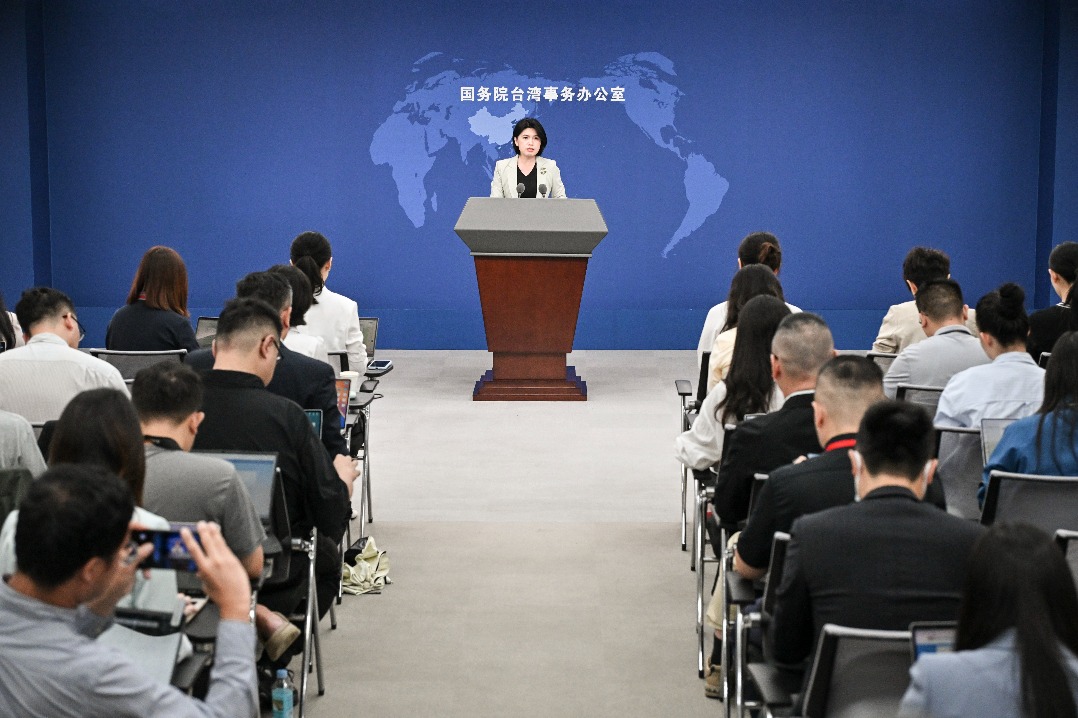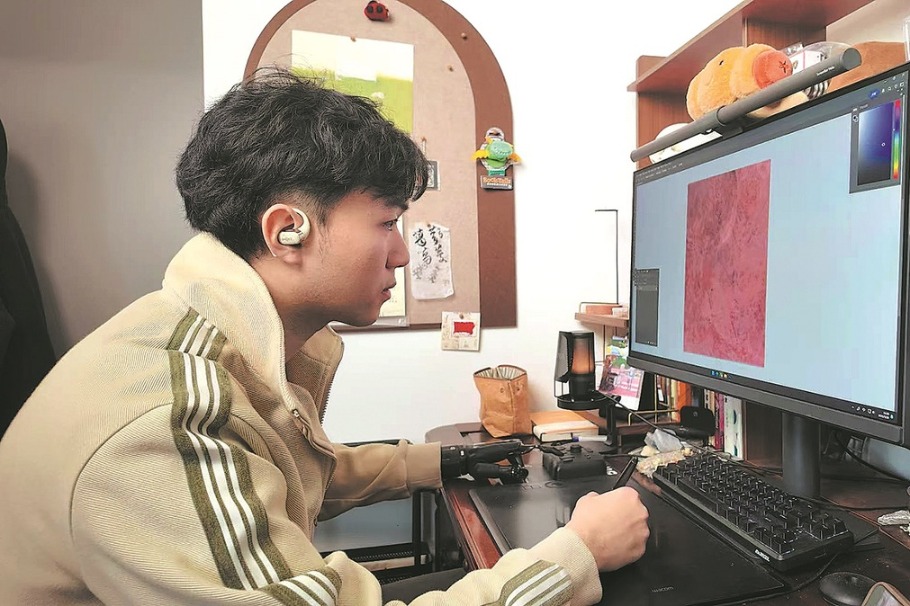HERITAGE OF COOPERATION
Restoration of the quake-hit Basantapur Palace in Nepal has been completed with Chinese help, Yang Feiyue reports.

Standing on the top story of Basantapur Palace in Nepal, Yuan Mengxi has a hard time relating today's reality with what she saw seven years ago.
The palace complex, which is located in the middle of Durbar Square in the country's capital Kathmandu, was badly damaged in a massive earthquake in April 2015.The nine-story palace, a tourist landmark, was inscribed in the UNESCO World Heritage List in 1979.
The palace not only has great historical significance but is also an architectural feat.
"You can see the whole place from here, and everything is beautiful and in order," says Yuan, 33, who is originally from Zhengzhou, capital of Central China's Henan province, and currently works for the Beijing-based Chinese Academy of Cultural Heritage. She is in Nepal to oversee the restoration of the palace.
"Vendors are selling their goods and visitors are sipping coffee or going about their business, while the mountains stretch in the distance," Yuan says about the scene she sees from the palace.
She made her first work trip to Kathmandu in October 2015, six months after the earthquake shook the city.
She says she was in shock seeing the city after the quake at the time. Heritage buildings in Durbar Square were reduced to rubble, with exquisite wooden statues buried and scattered over a wide area. "Kathmandu valley was still shrouded in the dust from the quake," she recalls.
In the aftermath of the tremors, both the Chinese and the Nepali governments agreed to launch a project aimed at restoring the nine-story Basantapur Palace complex.
"We were there to conduct feasibility studies and discuss technical and restoration issues," says Yuan, who was the main language interpreter from the Chinese side during the trip that lasted for about one and a half months.
The project officially kicked off in August 2017. The Chinese Academy of Cultural Heritage undertook the restoration work under the guidance of the National Cultural Heritage Administration of China. It is among China's largest cultural heritage restoration foreign aid projects that have been conducted in six countries by the end of 2020.
China offered technical and professional support to the project, which was a challenging job, as the top three stories of Basantapur Palace had collapsed.
Some 80 percent of the complex walls suffered varying degrees of deformation and cracking, with more than 10,000 wooden components, both structural and decorative, undermined.
In addition, the complex remained open to visitors, so the Chinese team conducted risk assessment and built a safety passage for the public.
This put even further pressure on the Chinese team as it had to ensure the safety of visiting tourists as well as the progress and integrity of the project.
"We insisted on retaining as much historical information as possible during the restoration," Yuan says.
Chinese engineers meticulously saved the scattered bricks and tiles, and tried to restore those that were damaged.
This entailed numbering each piece and studying its location before it was put back in place.
Many craftspeople with experience of restoring historical buildings were recruited for the palace project.
"To restore some big wooden components that run 6 meters long, we went to the depths of forests for raw material," Yuan says.
China's efforts in restoring the palace got recognition recently from Damodar Gautam, director general of Nepal's Department of Archaeology.
Gautam says Chinese experts consulted the Nepali side on how to preserve the complex's traditional value, design and originality.
"They were very cautious about maintaining the authenticity, integrity and value of the world heritage site," he adds.
Yuan has been interested in art history since her childhood and that led her to work in this field.
"I loved going to museums and art galleries," she says.
After getting a bachelor's degree in English from the Capital Normal University in 2012, Yuan joined postgraduate archaeological studies at the same university. During an academic exchange program in London as part of her postgraduate study, Yuan learned more about Chinese archaeological experts helping restore cultural heritage sites in Angkor, Cambodia.
Yuan grabbed the opportunity of a job at the Chinese Academy of Cultural Heritage after university in 2015.
During her first trip to Nepal for the palace project, she was impressed by how Nepali and Chinese experts emphasized the authenticity and integrity of the structure in their discussions about the restoration plan, which sounded familiar yet ambiguous to Yuan back then.
"It was clear, because many of the professional terms had been hammered into us by our teacher over and over again in our class," Yuan says.
"However, it would be difficult to have an in-depth understanding of them if one didn't work in the front line of cultural heritage protection," she says, adding that a great deal of knowledge and concept about historical heritage restoration wasn't available in books.
Over the years, Yuan has made approximately 10 trips to Nepal for the Basantapur Palace restoration project. She studied the cultural and artistic value of the palace, took charge of research and recorded the restoration work through a camera.
At the beginning, the Chinese restoration team had insufficient historical references to work with, especially for the collapsed parts of the complex.
"They had to visit veteran craftsmen and collect old photos in their efforts to restore the historical traces of the complex," Yuan says.
Based on research of the earthquake damage and the structural features of the palace, the team moved to reinforce the building.
This was done by means of adding material that aids the structure's ability to absorb shock. This material is put inside nodes placed at specific junctions around the building.
This enabled them to improve the complex's quake resistance with minimal intervention. The Chinese team also got a patent in China for the use of this advanced technology.
In addition, as the complex had numerous fine and exquisite wooden structures and sculptures, the team used as many original components as possible and all the damaged carvings in the elaborate windows were restored.
About 85 percent of the old wooden components were repaired and assembled in the original location during the project, while around 3,700 pieces of wooden components were newly built as supplementary parts for the project. The more old wooden components were applied, the less historical information was lost.
Nepali sculptor Manhari Maharjan, who worked on the project, says the Chinese team could identify the carvings of designs.
"If a window needed to be repaired, the Chinese team would examine the window and invite us to discuss whether something was missing."
Personnel on both sides then compared the existing windows with pictures of the original ones to find and develop missing parts before they "created a window like the original one", Maharjan says.
Yuan now is busy putting together a permanent exhibition displaying the restoration process of the Basantapur Palace complex.
"We hope it will help carry forward cultural heritage restoration concepts and technology among the public," she says.
Xinhua contributed to the story.
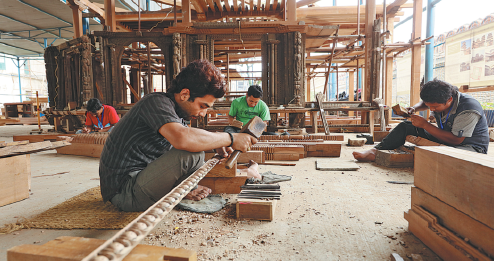
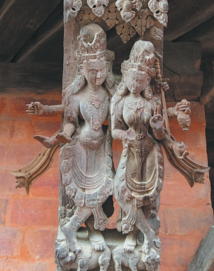
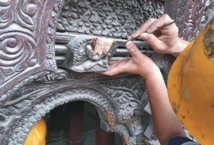
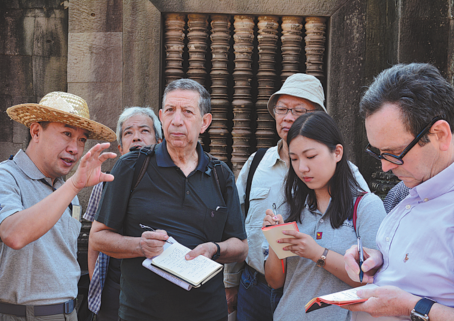
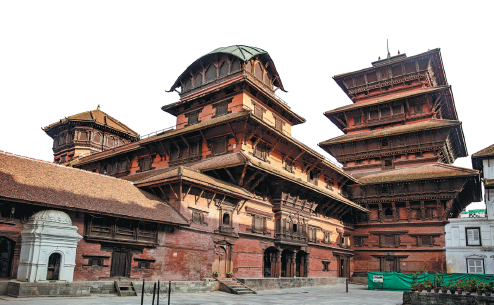

Today's Top News
- Tajikistan looks to China for deeper ties
- High-tech manufacturing lifts industrial profits
- Avenue blooms with flowers to mark victory
- Mainland slams DPP for distorting WWII history
- Northeast Asia trade in focus at Jilin expo
- Organic agriculture forum unites global experts in Datong
















